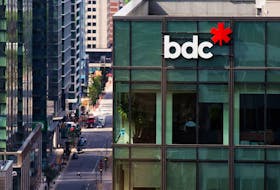Q: Last year my wife and I started trying to buy a bigger home for our growing family but everything we wanted was a little beyond our price range. When the mortgage rates went down a bit just before the coronavirus hit Canada, we put an offer in at the very top end of our price range, and it was accepted. We were devastated when the bank didn’t give their approval right away, and then two days later we decided to pass on the opportunity and let the deal go. Now we’re so thankful that we didn’t buy because while I’ve got a few more weeks of work, I’ll be laid off mid-April at the latest because of shortages from our suppliers. With some savings and the government support to get through the pandemic we will make it, but it got us thinking about taking on big payments. We were pre-approved for a fair-sized mortgage and shopped with that amount in mind because we thought we’d be able to afford it. How do we determine how much debt is actually OK for us? ~Andrew
A: The financial and economic fallout from the coronavirus pandemic will be felt for years to come. While measures to help Canadians manage through the worst of it are buying time until we can collectively get back on our feet, it could take a generation to recover. And the general consensus seems to be that as we do recover, we’ll create a new normal; life likely won’t look the same as it did before COVID-19 became a household name.
For many, creating a new normal is a welcome change and speaks to some of the good to come out of these extremely difficult events. If this crisis causes you to take a more proactive approach and manage your family’s finances in a way that builds a solid financial future, that is a legacy worth working towards.
To determine how much debt is OK for you and your family, here are some things to think about:
What is most important to you?
Social distancing has reinforced how much we value connection with family and friends, both near and far, our community, even strangers at large. And if self-isolation has taught us anything, it’s how many people have realized how little they actually need and how much they already have.
When we consider what’s important to us, we can determine how best to spend our money.
● Do we want to work long and hard to make big mortgage / car / credit card payments, or would we rather live in a way that gives us more time with those we love?
● Do we value possessions over experiences, or the other way around?
● Do we want to work at making ends meet, or at having less ends?
These are questions everyone needs to answer for themselves, because how you want to live your life is what ultimately determines how you spend your money.
What Does It Mean to Build an Emergency Budget?
Borrowing when interest rates are low
The historically low interest rates that were used to help lift Canada out of the economic downturn that followed the 2008-2009 financial crisis left many Canadian households facing today’s crisis in worse financial shape than they were in before the 2008 crisis began. When credit is cheap and easy to get, we tend not to save and spend well beyond our means.
How to Determine How Much of a Mortgage You Can Afford
The best way to avoid falling into this trap (again) is to align your spending with what is most important to you. For instance, if spending time with your spouse and children is important to you, create a household budget based on frugal choices. This might mean having each child in one after-school activity, rather than in three or four of them, each week. That could give your family the means, as well as the time away from school and work, to partake in other activities together.
If your children are young adults with partners of their own, spending time together might mean building a patio or renovating your kitchen in a way that makes it easy to host relaxing get-togethers.
How you choose to borrow after COVID-19 likely should look different than it did before the pandemic. Use the benefit of 20/20 hindsight to guide your decisions. Keeping rates low will be used as a way to entice Canadians to borrow and spend to get the economy moving again. But how much you borrow and spend needs to fit with your circumstances.
Spread out when you spend your money
Kind of like stocking up on snacks and then rationing them during self-isolation, taking steps to spread out when you spend your money isn’t a new idea.
Spreading out our spending involves taking what we earn, setting a portion aside, and spending the rest on our current expenses and obligations. The portion of our income that we set aside, that amount can vary from only a little to significant percentages of our income, depending on what we deem important and where we are on our financial journey. The goal behind setting money aside and distributing it over time is so that we have enough for what we want to buy later. That way we aren’t forced to rely on credit, assistance, or forgo the expenditure altogether.
Why set money aside for spending later?
We might set money aside for spending later because we’ve noticed that we already have enough and don’t want to spend on more than we actually need. By choosing to think and act this way, we are taking deliberate steps to live within, or even below, our means.
Take a vehicle, for instance. While your car might no longer be new, if it runs well, is still in good condition, and your circumstances don’t warrant a change in vehicle type (e.g. a two-door coupe to a minivan), don’t commit to a car loan you don’t need or want.
Instead, take the money you would have spent on car payments and set it aside each month. It could end up paying for any number of things, not the least of which would be a down payment on a newer vehicle when the time comes.
By using this approach, it will balance how much money you spend and save based on what’s important to you. No amount of car loan debt is OK if you don’t want or need the vehicle it’s paying for. Just like with our rationed snacks — eating too many all at once will give you a bad feeling in the pit of your stomach.
How You Drive Might Help You Get Out of Debt
The bottom line on how to manage your money and debt
Everyone is eager to get back to the life they put on pause. However, if you want your financial situation to improve, use this reset on your life to do things differently. Manage your money and debt in a way that lets you live below your means. Spend less than you earn on a day-to-day basis so that you can set money aside for spending later. By planning for the worst and hoping for the best you’re creating your own safety net.
Related reading:
What Does It Take to Qualify for a Loan?
8 Ways to Save for Any Big Purchase
3 Ways to Create a Personal Budget with Irregular Income
Scott Hannah is president of the Credit Counselling Society, a non-profit organization. For more information about managing your money or debt, contact Scott by email , check nomoredebts.org or call 1-888-527-8999.
Copyright Postmedia Network Inc., 2020








